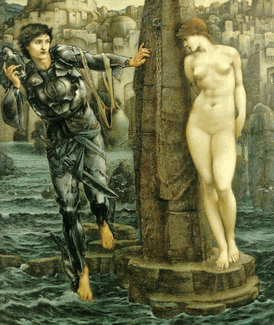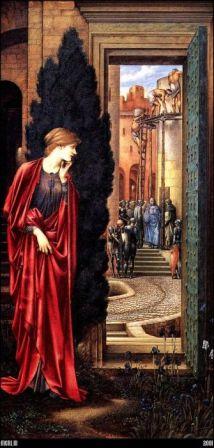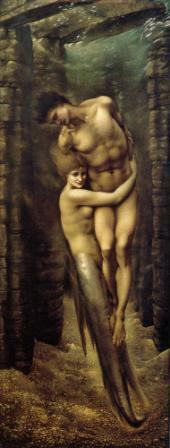-ћетки
-–убрики
- ј–“»Ќџ –ќ——≈““» (16)
- ѕ–ќ«≈–ѕ»Ќј PROSERPINA (3)
- BEATA BEATRIX (2)
- LADY LILITH@SYBILLA (2)
- ѕи€ де “оломеи (1)
- BOCCA BACIATA (1)
- «≈Ћ®Ќџ≈ –” ј¬ј (1)
- REGINA CORDIUM QUEENG of HEARTS (1)
- THE BLESSED DAMOSEL Ѕлагословенна€. (1)
- ASPECTA MEDUSA (1)
- ƒама в окне. The Lady of the Window. (1)
- ¬идение ‘иаметты. Vision of Fiammetta. (1)
- ƒневна€ мечта. The Day Dream и The Bower Meadow (1)
- „ј—“» “≈Ћј. THE BODY PARTS. (13)
- Ќј√ќ“ј ¬ »— ”——“¬≈ (5)
- ќЋЋ≈ ÷»я ‘≈“»Ў»—“ј (4)
- —“ќѕџ » »—“» скованные одной цепью. (3)
- ќЌ –≈“Ќџ≈ Ќќ∆ ». (1)
- ћќƒ≈Ћ» –ќ——≈““» (11)
- ƒ∆≈…Ќ ћќ––»— Ѕ®–ƒ≈Ќ JANE MORRIS BURDEN (4)
- ‘анни орнфорт (2)
- јЌЌ» ћ»ЋЋ≈– ANNIE MILLER (1)
- јЋ≈ —ј ¬ј…Ћƒ»Ќ√ ALEXA WILDING (1)
- ЅјЋ≈“ — “–≈“№≈√ќ я–”—ј. (9)
- HANNIBAL LECTER (5)
- ристина –оссетти (5)
- ристина –оссетти Christina Rossetti поэзи€ poems (3)
- ART DECO (4)
- √јЋ≈–≈я Ћ≈ћѕ»÷ ќ… (1)
- “јћј–ј Ћ≈ћѕ»÷ ј (1)
- „“ќ ¬ »ћ≈Ќ» “≈Ѕ≈ ћќ®ћ? (4)
- Ёлизабет —иддал (4)
- ∆»«Ќ№ ј–“»Ќ. (3)
- мо€ живопись. My paintings. (3)
- —ѕ»—ќ ’”ƒќ∆Ќ» ќ¬ (1)
- ‘–»Ќј —≈ћ»–јƒ— ќ√ќ (1)
- Ќ»√ј ќ –ќ——≈““» (1)
- ћјЌ№≈–»«ћ (1)
- —писок работ –оссетти. The full list of Rossetti's (1)
- DOUBLE WORKS (1)
- јЌќЌ—џ –”Ѕ–» (2)
- ѕ–≈–ј‘јЁЋ»“џ (38)
- ¬—≈ ѕ–≈–ј‘јЁЋ»“џ (11)
- —ѕ–ј¬ » по ѕ–≈–ј‘јЁЋ»“јћ (4)
- ѕ–≈ƒ“≈„» (3)
- ѕ–≈–ј‘јЁЋ»“џ ¬ –ќ——»» (1)
- –ќ——≈““». ROSSETTI. (50)
- –ќ——≈““» ∆»«Ќ№ ROSSETTI LIFE (43)
- ƒжон ”иль€м ѕолидори и его ¬ампир (1)
- –ќ——≈““» —ќ —“ќ–ќЌџ (1)
- пќЁ«»я –ќ——≈““» (1)
- ћ”«≈» —ј…“џ. MUSEUMS. SITES. (15)
- ћ≈“–ќѕќЋ»“≈Ќ (3)
- ’”ƒќ∆≈—“¬≈ЌЌџ… ћ”«≈… ƒ≈Ћј¬ј–ј. (3)
- ћќ… Ё–ћ»“ј∆ (3)
- Ћ»¬Ћ≈Ќƒ— »… ћ”«≈… (1)
- ћќ» –ќћјЌџ (58)
- »— ј“≈Ћ№ 2 (41)
- роман "”читель" (9)
- ј« ≈—ћ№ (3)
- Ё «»—“≈Ќ÷»я (1)
- Novels, English versions. (1)
- мои стихи (1)
- ј—‘јЋ№“ (1)
-ћузыка
- гуд бай дарлинг
- —лушали: 169 омментарии: 0
- полный закат
- —лушали: 188 омментарии: 1
-ѕоиск по дневнику
-ѕодписка по e-mail
-»нтересы
-—ообщества
-—татистика
«аписи с меткой dudley gallery
(и еще 2 запис€м на сайте сопоставлена така€ метка)
ƒругие метки пользовател€ ↓
annie miller beata beatrix beatrice meeting dante at a marriage feast before the battle burne-jones camille bonard christina georgina rossetti christina rossetti dante gabriel rossetti edward edward poynter eleanor fortescue-brickdale elizabeth siddal eugene onegin fanny co feet fetish first anniversary frank cadogan cowper gabriel charls dante rossetti gg augustus leopold girls goblin market hannibal lecter hughes joanna mary boyce kelmscort manor lady lawrence liberty madox brown mariana moore naked nude painting palazzo del padesta rossetti st. reparata stacy marks the music master the rossetti family the seed of david vita nuova willian allinham working men's college артур хьюз балет белые розы блаженна€ беатриче бойс галере€ тейт гамлет и офели€ голубь грант вуд данте габриэль россетти джейн моррис джон э́веретт милле́ живопись искатель искусство кеннет кларк кристина россетти леди шалотт лемпицка лемпицка€ мариинский мари€ магдалина у дверей симона-фарисе€ менады моррис нагота новый роман ножки прерафаэлиты прозерпина роман россетти сиддал сомова соцреализм то́мас карле́йль фани корнфорт фетиш фо́рд мэ́докс бра́ун хант хьюз чаадаев часовн€ подеста эдвард элизабет сиддал
NEW GALLERY |
ƒневник |
NEW GALLARY
 Central Hall of the New Gallery, from the catalogue New Gallery Notes, Summer 1888.
Central Hall of the New Gallery, from the catalogue New Gallery Notes, Summer 1888.
÷ентральный зал Ќовой √алереи по каталогу New Galery notes Ћето 1888
Ќова€ √алере€ была основана в 1888 году by J. Comyns Carr and Charles Edward Hallé.
The New Gallery was founded in 1888 by J. Comyns Carr and Charles Edward Hallé. Carr and Hallé had been co-directors of Sir Coutts Lindsay's Grosvenor Gallery, but resigned from that troubled gallery in 1887. The building was designed by Edward Robert Robson FSA, and constructed in little more than three months to ensure that it could open in the summer of 1888.
The gallery was built on the site of an old fruit market. Existing cast-iron columns supporting the roof were encased with marble to give the impression of "massive marble shafts" topped with gilded Greek capitals. The architrave, frieze, and cornices above the columns were covered with platinum leaf. At the opening, the West and North Galleries on the ground floor were devoted to oil paintings, and the first floor balcony around the Central Hall displayed smaller works in oils, watercolours, etchings and drawings. Sculpture was displayed in the Central Hall itself.
The New Gallery continued the ideals of the Grosvenor, and was an important venue for Pre-Raphaelite and Aesthetic movement artists. Edward Burne-Jones, then at the height of his popularity, supported the new venture, serving on its Consulting Committee and lending three large oils for the opening, thus ensuring its financial success. Lawrence Alma-Tadema and William Holman Hunt also joined the Consulting Committee, and George Frederic Watts and Lord Leightontransferred their loyalty to the New Gallery.
The private view of the first exhibition was held on Tuesday, 8 May 1888, and the exhibition opened to the public on Wednesday, 9 May, for three months. The private view was a great social success, with former Prime Minister William Ewart Gladstone among the early arrivals.
In October and November 1888, the New Gallery hosted the first showcase of industrial and applied arts by the Arts and Crafts Exhibition Society under the direction of its founding president, illustrator and designer Walter Crane. No attempt had been made to show contemporary decorative arts in London since the Grosvenor Gallery's Winter Exhibition of 1881, which included cartoons for mosaic, tapestry, and glass, and the Society's annual (later triennial) exhibitions at the New Gallery were important events in the Arts and Crafts Movement at the end of the 19th century.
In 1893 the New Gallery exposed for the first time four panels by Masaccio, later attributed to the Pisa Polyptych (now in Staatliche Museen, Berlin).
Carr continued as co-director until 1908. The Arts and Crafts Exhibition of 1910 was the last to be held at the New Gallery.
1888
Burne-Jones.


The Rock of Doom.

The Tower of Brass.
The Depths of the Sea.
1892

A REVERY
Albert Moore
The New Gallery was the setting for a major Burne-Jones retrospective in 1892–93 and a memorial exhibition of his works in 1898.
Marie Spartali Stillman exhibited at the Dudley Gallery, then at the Grosvenor Gallery and its successor, the New Gallery.
—ери€ сообщений "ѕ–≈–ј‘јЁЋ»“џ":
„асть 1 - ѕ–≈–ј‘јЁЋ»“џ
„асть 2 - —ќ¬ћ≈—“Ќјя ƒ≈я“≈Ћ№Ќќ—“№ „Ћ≈Ќќ¬ Ѕ–ј“—“¬ј
...
„асть 10 - —»ћ¬ќЋџ ¬ ∆»¬ќѕ»—» ѕ–≈–ј‘јЁЋ»“ќ¬
„асть 11 - ∆»¬ќѕ»—Ќјя “≈’Ќ» ј ѕ–≈–ј‘јЁЋ»“ќ¬
„асть 12 - NEW GALLERY
„асть 13 - Dudley Museum and Art Gallery
„асть 14 - —котт ”иль€м Ѕелл
...
„асть 17 - King René's Honeymoon Cabinet
„асть 18 - —ѕ–ј¬ » ѕќ ѕ–≈–ј‘јЁЋ»“јћ (Ћ»„Ќќ—“»)
„асть 19 - ——џЋ », Ћ»“≈–ј“”–ј, —ј…“џ
|
ћетки: A REVERY New Gallery Marie Spartali Stillman Dudley Gallery Burne-Jones |
¬џ—“ј¬ » ѕ–ќƒќЋ∆≈Ќ»≈ |
ƒневник |
¬торое поколение прерафаэлитов выставл€лось в London's Grossvenor Galary and New Gallery и представл€ло доминирующую тенденцию нар€ду с нео-классицизмом и эстетизмом.
Grosvenor Gallery
— 1877 года новой "витриной" прерафаэлитов стала Grosvenor Gallery, главным образом там выставл€лс€ ЅЄрн-ƒжонс, но приглашались и другие: ћилле, ’олман ’ант, ћэдокс Ѕраун, ’ьюз, ћари —партали, —пенсер —тэнхоп, Ёвелин де ћорган и ’елен Allingham.
 Interior of the Grosvenor Gallery - West Gallery, published in The Illustrated London News, 5 May 1877
Interior of the Grosvenor Gallery - West Gallery, published in The Illustrated London News, 5 May 1877
√алере€ √росвенор была основана в 1877 году сэром оутсом Ћиндсеем (Sir Coutts Lindsay) и его женой Ѕланш. ѕервым директором стал J. Comyns Carr and Charles Hallé. √алере€ сыграла критическую роль в развитии Ёстетического ƒвижени€, став домом тем художникам, чей подход к живописи консервативна€ оролевска€ академи€ не приветствовала, например Edward Burne-Jones and Walter Crane и других членов Ѕратства ѕрерафаэлитов. Ћиндсэй и его жена были знатного происхождени€ и имели хорошие св€зи, оба они были художниками любител€ми. Ѕланш происходила из семьи –отшильдов и это еЄ деньги сделали возможным подобное предпри€тие. ¬ галерее выставл€лись полотна художников не входивших в британский мэйнстрим.
Ќа открытие галереи ЅЄрн-ƒжонс выставил восемь своих работ, включавших ƒни творени€, «еркало ¬енеры и ќбольщение ћерлина.
¬ 1877 ƒжон –ескин посетил галерею, чтобы увидеть работы Ѕерн-ƒжонса. артины ƒжеймса ћакнила ”истлера также демонстрировалась в это врем€ в галерее. ¬збешЄнный –ескин жестоко раскритиковал работы ”истлера в своЄм ревю, что привело к известному делу о клевете, возбуждЄнному художником против критика. ”истлер выиграл дело и получил фартинг в качестве компенсации убытков. »ск сделал галерею известной как штаб Ёстетического движени€. ќснованна€ как альтернативное оролевской јкадемии выставочное пространство, галере€ на Ѕонд-—трит стала мгновенно восприниматьс€ как прибежище художников авангарда , особенно св€занных с пон€тием "искусства ради искусства".
Ћиндси за€вил:" ≈сть несколько людей в Ћондоне, идеи которых и метод воплощени€ их странны дл€ нас; но поскольку € не считаю странность и даже эксцентричность метода достаточным оправданием дл€ игнорировани€ работ известных в остальных отношени€х художников, € построил галерею Grosvenor, чтобы их картины... могли быть справедливо и честно оценены". ’удожник-любитель в роспис€х и дизайне керамики - Ћиндси был сторонником декоративной живописи.
The Grosvenor Gallery was an art gallery in London founded in 1877 by Sir Coutts Lindsay and his wife Blanche. Its first directors were J. Comyns Carr and Charles Hallé. The gallery proved crucial to the Aesthetic Movement because it provided a home for those artists whose approaches the more classical and conservative Royal Academy did not welcome, such as Edward Burne-Jones and Walter Crane. Lindsay and his wife were well-born and well-connected, and both were amateur artists. Blanche was born a Rothschild, and it was her money which made the whole enterprise possible. The Grosvenor displayed work by artists from outside the British mainstream, including Edward Burne-Jones, Walter Crane and other members of the Pre-Raphaelite Brotherhood. In 1877 John Ruskin visited the gallery to see work by Burne-Jones. An exhibition of paintings by James McNeill Whistler was also on display. Ruskin's savage review of Whistler's work led to a famous libel case, brought by the artist against the critic. Whistler won a farthing in damages. The case made the gallery famous as the home of the Aesthetic movement. Founded as an alternative exhibition space to the Royal Academy, the Bond street venue was istantly perceived as a haven foe avant-garde artists, particularly those associated with the notion of art for art's sake.Lindsay stated:"There are several men in London whose ideas and method of embodying them are strange to us; but as I do not think strangeness, ore even eccentricity of method, sufficient excuse for ignoring the woks of men otherwise notable, I have built the Grosvenor Gallery that their pictures... may be fairly and honestly judged".An amateur artist in mural and ceramic design, Lindsay was a particular supporter of decorative painting.
„“ќ Ё —ѕќЌ»–ќ¬јЋќ—№ ¬ √јЋ≈–≈≈.
1877
Ќа открытие галереи ЅЄрн-ƒжонс выставил восемь своих работ, включавших ƒни творени€, «еркало ¬енеры и ќбольщение ћерлина.



јльберт ћур на открытии галереи выставил онец истории, —апфиры и Ѕархатцы.
Moor contributed The end of story, Sapphires and Marigolds to the inagural ehxibition of the Grosvenor Gallery.



The End of Stoty, Sapphires, Marigolds.

Affronted byThe Falling Rocket, John Ruskin accused Whistler of “flinging a pot of paint in the public's face” in the Fors Clavigera. As a leading art critic of theVictorian era, Ruskin’s harsh critique of The Falling Rocket caused an uproar among owners of other Whistler works. Rapidly, it became shameful to have a Whistler piece, pushing the artist into greater financial difficulties. With his pride, finances, and the significance of his Nocturne at stake, Whistler sued Ruskin for libel in defence. In court, he asked the jury to not view it as a traditional painting, but instead as an artistic arrangement.[5] In his explanation, he insisted that the painting was a representation of the fireworks from the Cremorne Gardens. During the trial, Sir John Holker asked, “Not a view of the Cremorne?” to which Whistler was quoted as saying, “If it were a view of Cremorne, it would certainly bring about nothing but disappointment on the part of the beholders.”[6] However, his case was not helped when The Falling Rocket was accidentally presented to trial upside down.[7] His explanation of the composition proved fruitless before the judge. The Ruskin vs. Whistler Trial, which took place on November 25 and 26, 1878, was disastrous for Whistler. While he did not lose, he only won a farthing.[8] After all the court costs, he had no choice but to declare bankruptcy. Whistler was forced to pawn, sell, and mortgage everything he could get his hands on.[9] Whistler included a transcript of the case in his 1890 book The Gentle Art of Making Enemies.
ќскорблЄнный видом The Falling Rocket –аскин обвинил ”истлера в том, что тот "швырнул горшок красок в лицо публике".—уровое осуждение ведущего критика ¬икторианской эпохи вызвало скандал среди владельцев работ ”истлера. ќчень скоро стало постыдным иметь его работы,что привело художника к финансовым трудност€м. ѕод угрозой также оказалась гордость ”истлера и значение его Ќоктюрна. «ащища€сь он обратилс€ в суд,обвин€€ –аскина в клевете.
1878
Ќа второй выставке ЅЄрн-ƒжонс представил Laus Veneris (восхваление ¬енеры) и как основной опус Le Chant d' Amour.
In 1878 Moor's Birds and Burne-Jone's Laus Veneris were hanging in close proximity at the Gallery.
 BIRDS
BIRDS

LAUS VENERIS
1879
 TOPAZ
TOPAZ
1880
 Jasmine
Jasmine
1882

The Tree of Forgiveness, by Burne-Jones
According to Burne-Jones' own list of works, he worked on 'The Tree of Foregiveness' in 1881 and completed it in 1882. The face of Phyllis was most probably modelled on Maria Zambaco, a member of the Ionides family, with whom Burne-Jones had an affair in the late 1860s. He exhibited it at the Grosvenor Gallery in that year where it received mixed reviews. Some critics found the approach to the figures strange, The Times for example noted that: ‘The picture is a strange one, its effect repellent in the extreme…the anatomy is not only shown, but insisted on – flung violently in the spectator’s face, so that for some time nothing can be seen but muscles of every description, all of them twisting and straining...’.In contrast all the critics agreed that the details of the painting such as the almond blossom and flowers, were painted with great accuracy and appreciation of colour. Henry James, the American writer, wrote in support of the picture pointing out that the subject was difficult and impossible to make natural. The artist had to content himself with making the work look ‘lovely’. The art dealers Thomas Agnew & Sons purchased the painting from the Grosvenor Gallery exhibition and sold it to the Liverpool businessman William Imrie for £2,100 in December 1882.

Cupid's Hunting Fields
| Sir Edward Coley Burne-Jones | |
|
|
1884

1890 The third Grosvenor pastel exhibition.
 A bathing place
A bathing place
Marie Spartali Stillman exhibited at the Dudley Gallery, then at the Grosvenor Gallery and its successor, the New Gallery
огда в 1890-м галере€ закрылась, еЄ место зан€ла New Gallery, где не только демонстрировались новые произведени€, но и предоставл€лись вниманию публики ранние произведени€ прерафаэлитов.
—ери€ сообщений "ѕ–≈–ј‘јЁЋ»“џ":
„асть 1 - ѕ–≈–ј‘јЁЋ»“џ
„асть 2 - —ќ¬ћ≈—“Ќјя ƒ≈я“≈Ћ№Ќќ—“№ „Ћ≈Ќќ¬ Ѕ–ј“—“¬ј
...
„асть 5 - ∆»¬ќѕ»—№ ѕ–≈–ј‘јЁЋ»“ќ¬
„асть 6 - ¬џ—“ј¬ »
„асть 7 - ¬џ—“ј¬ » ѕ–ќƒќЋ∆≈Ќ»≈
„асть 8 - MORRIS, Marshall, Falkner & Co
„асть 9 - ѕ–≈
...
„асть 17 - King René's Honeymoon Cabinet
„асть 18 - —ѕ–ј¬ » ѕќ ѕ–≈–ј‘јЁЋ»“јћ (Ћ»„Ќќ—“»)
„асть 19 - ——џЋ », Ћ»“≈–ј“”–ј, —ј…“џ
|
|
| —траницы: | [1] |







